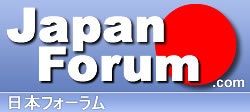| kenshiromusou |
09-21-2011 01:41 AM |
Quote:
Originally Posted by masaegu
(Post 880601)
Bom dia.
You are almost correct. When an episode of a TV program ends, typically, an announcer reads what companies sponsor the show. You will see the companies' names on the screen as well. This is what is called 「提供クレジット」.
The 「提供クレジット」 often has illustrations and BGM to it. Naturally, these are related to the program itself.
番組終了後 means "after the program has ended".
|
おはよっす! (long time, my friend!)
ありがとうございました、Masaegu先生。
And annoying you a bit more, I ask a (big) help with the phrase:
余談ではあるが、このイラストにおいてKenとShinのcloths は シ ョ ル ダ ーパッドをつけており、アニメにおいては 唯一のショルダーパッドをつけた画稿となっている。
I am not sure here, but does it say, summarizing, that "Ken and Shin had shoulder pieces in this illustration and they appeared in the anime with the shoulder pads (from illustration) only once."
Is it close to correct.
I feel I messing " 唯一のショルダーパッドをつけた画稿となっている up.
Thank you very much again and again. |

